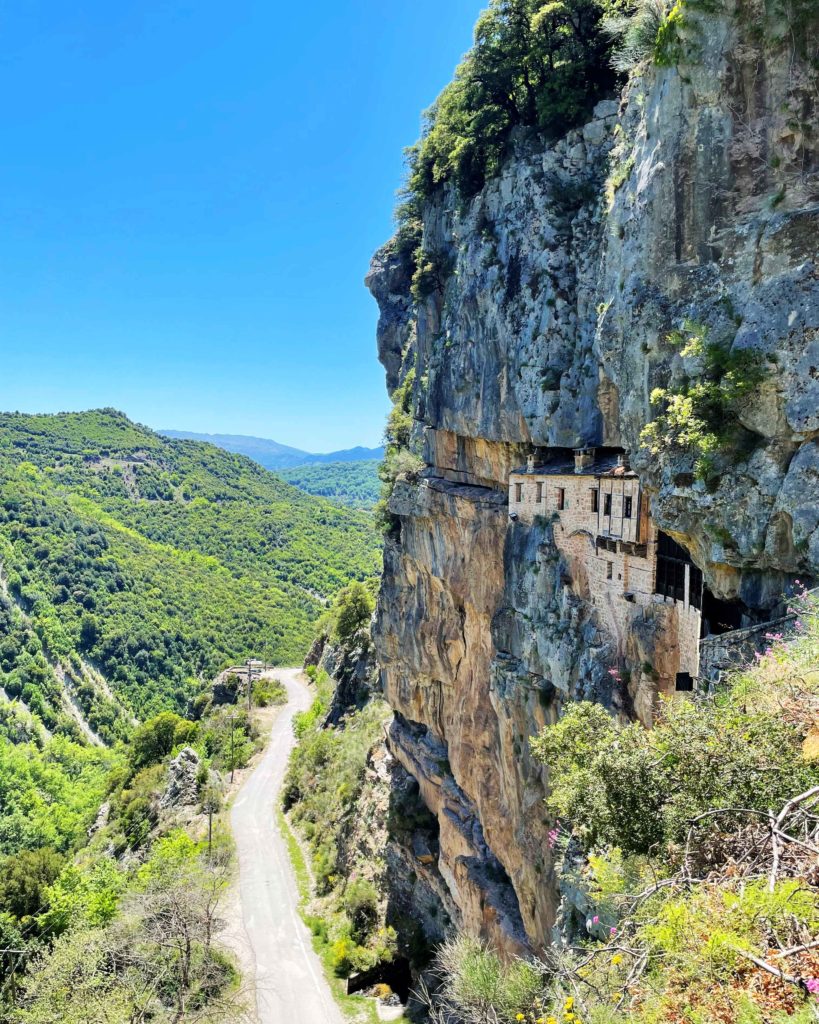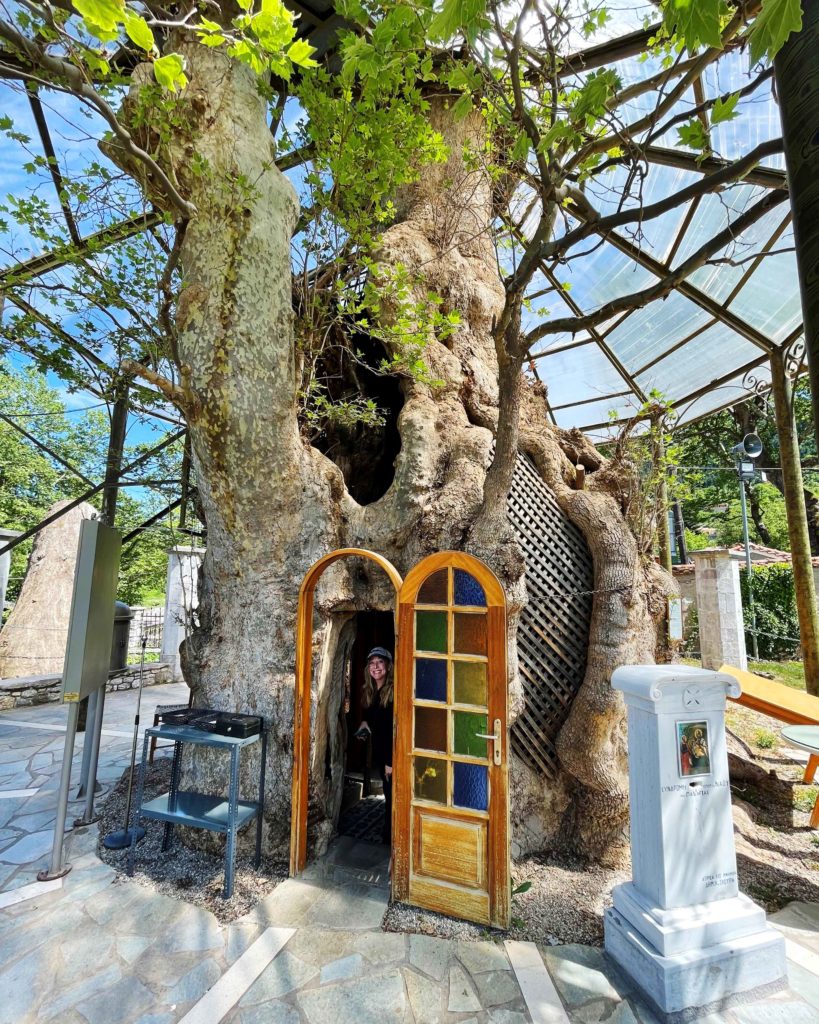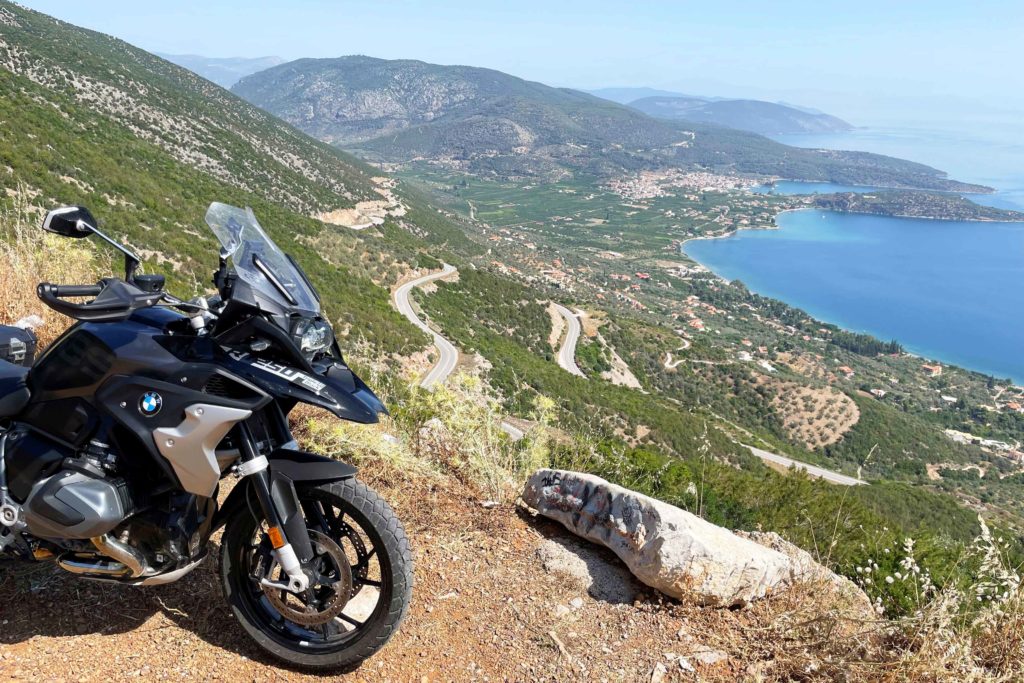
Having never been to Greece before, my mental postcards of the country consisted of the crumbling Parthenon in Athens and a cluster of white-washed, blue-roofed houses overlooking a turquoise sea.
The Parthenon, which my wife Carrie and I visited the day before the Edelweiss Bike Travel Best of Greece tour began, looked like I thought it would. Well, except for the scaffolding. The temple at the Acropolis is nearly 2,500 years old and was partially destroyed by the Venetians in 1687, so a little sprucing up is in order.
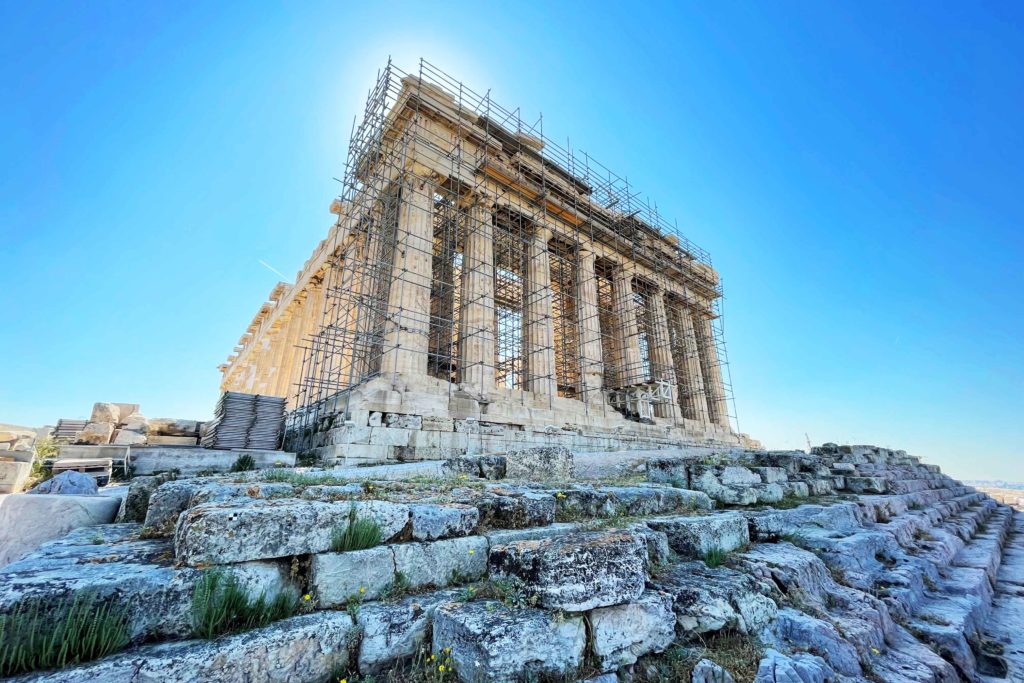
Those white-washed houses are on Santorini, an island out in the Aegean Sea. We didn’t go there, and that’s a good thing. Places like Santorini are where huge cruise ships disgorge hordes of waddling tourists. The Edelweiss tour avoids crowds and takes the roads less traveled.
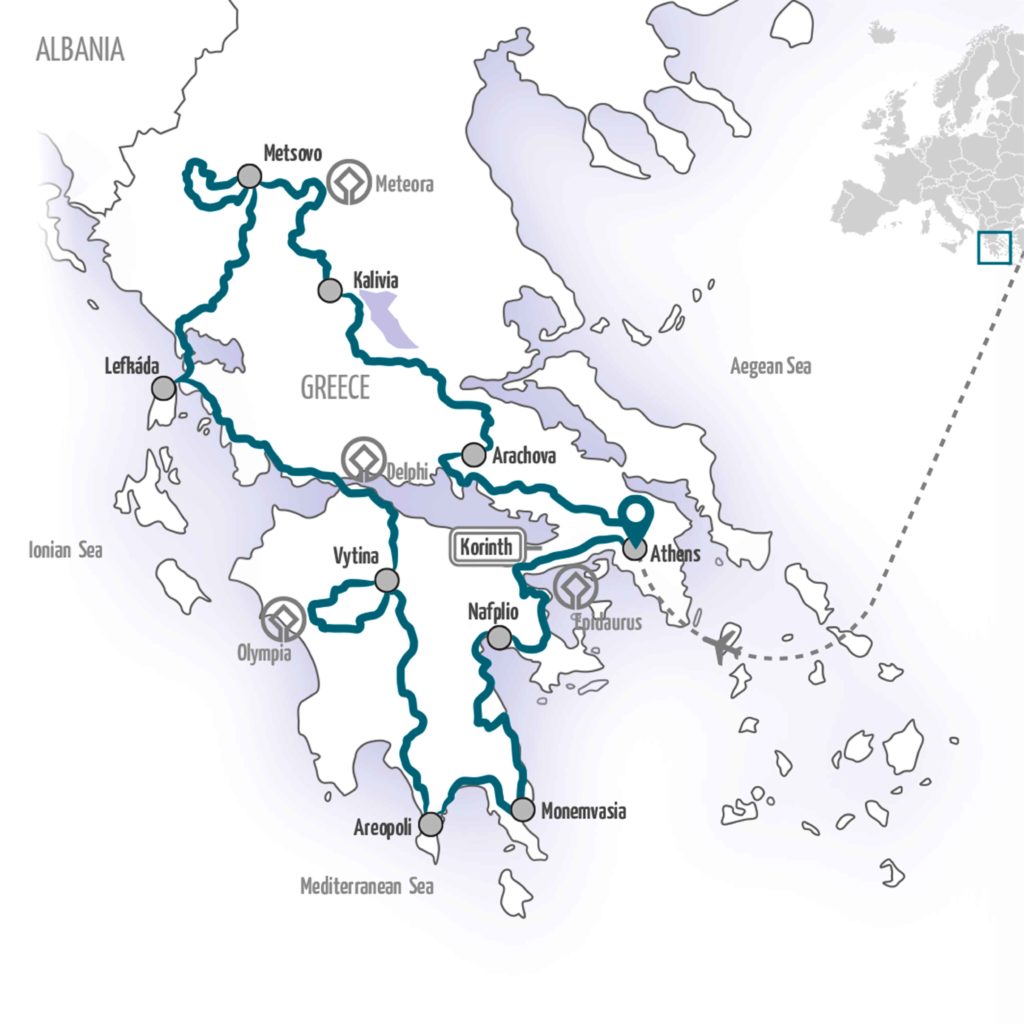
From Athens to the Oracle
Our tour began with meeting the guides, who gave us a safety briefing and an overview of the tour. Booklets, a hotel list, and a map of Greece were mailed to us in advance, but if I’m honest, I barely looked at them. The experts at Edelweiss have been running motorcycle tours since 1980, and they know what they’re doing. Since they take care of the preparation and planning, I enjoy letting the tour unfold from one day to the next.
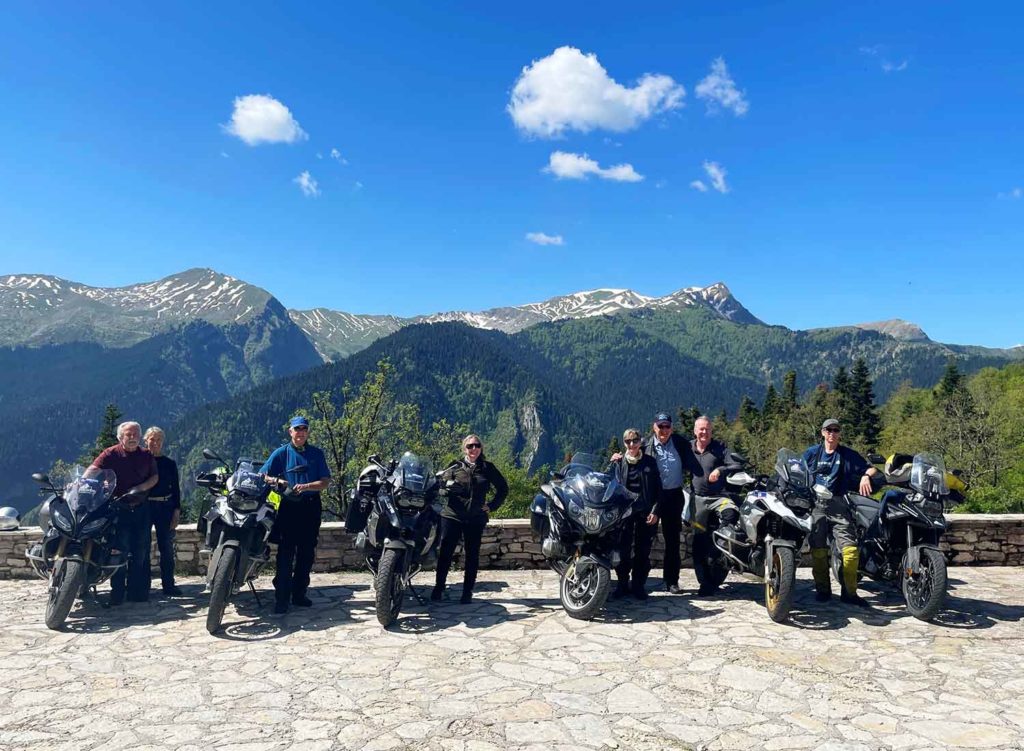
Our group was small, just eight participants, all Americans. Three couples rode two-up – Bob and Ronnie from Virginia, Ken and Evelyn from Georgia, and Carrie and me. Two guys rode solo – Yoram from California and Dave from Virginia. (Check out Dave’s travel tips on European motorcycle travel.) Our guides Paul (from Minnesota) and William (from the U.K.) alternated days riding the lead bike and driving the support van.
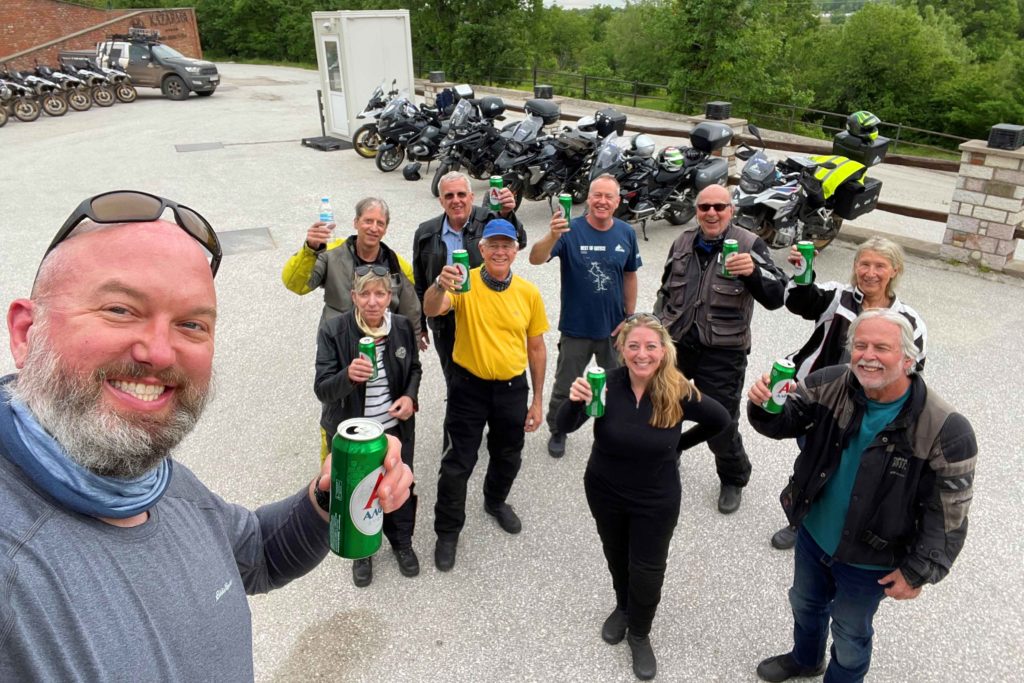
The first day of any overseas tour is a little stressful. Some folks are still jet-lagged, others are getting used to an unfamiliar bike on unfamiliar roads, and everyone is adapting to a new routine. Even so, our small group and common language made it easy for us to gel and get along.
Athens is a big capital city that’s home to nearly 4 million people – more than a third of Greece’s population. It’s great for sightseeing before or after the tour, but our objective was to escape the city as quickly as possible. After battling some Monday morning traffic, we did just that, climbing high into mountains on a narrow, winding road, giving us a taste of what was to come.
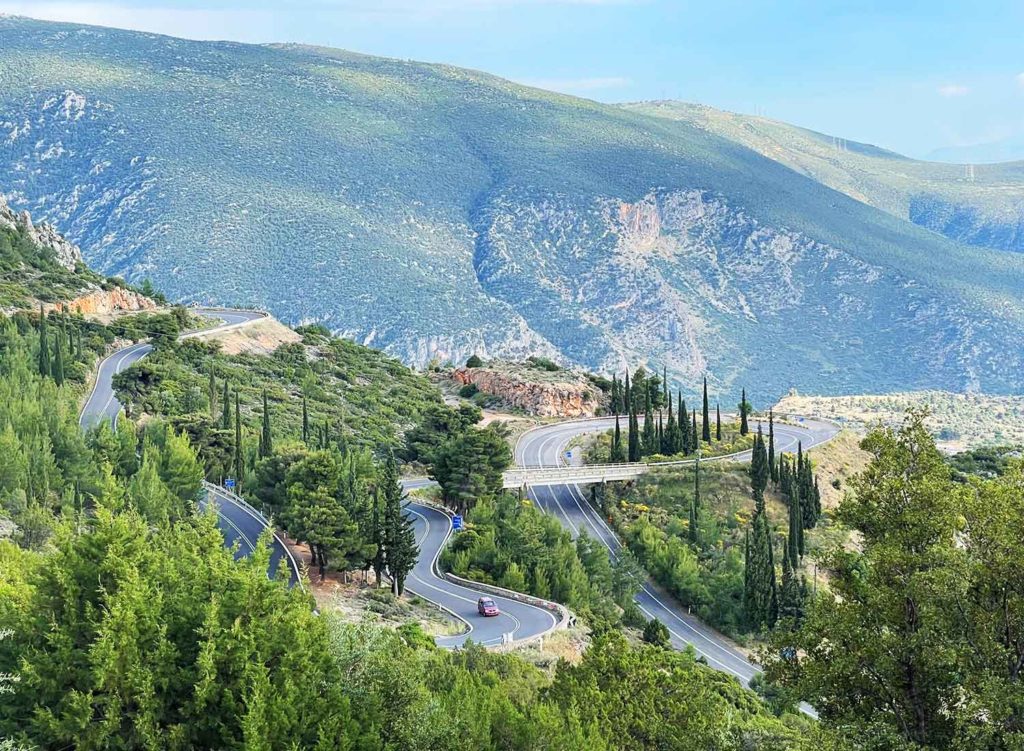
Rainer Buck, managing director of Edelweiss, ranks Greece as one of his top three riding destinations because “it’s like a mountain range was dropped into the sea.” Greece is tied with Slovenia as the third most mountainous country in Europe after Norway and Switzerland. Nearly 80% of the country’s land area is covered by sloped terrain that motorcyclists long for.
Listen to our interview with Rainer Buck on Episode 8 of the Rider Magazine Insider Podcast
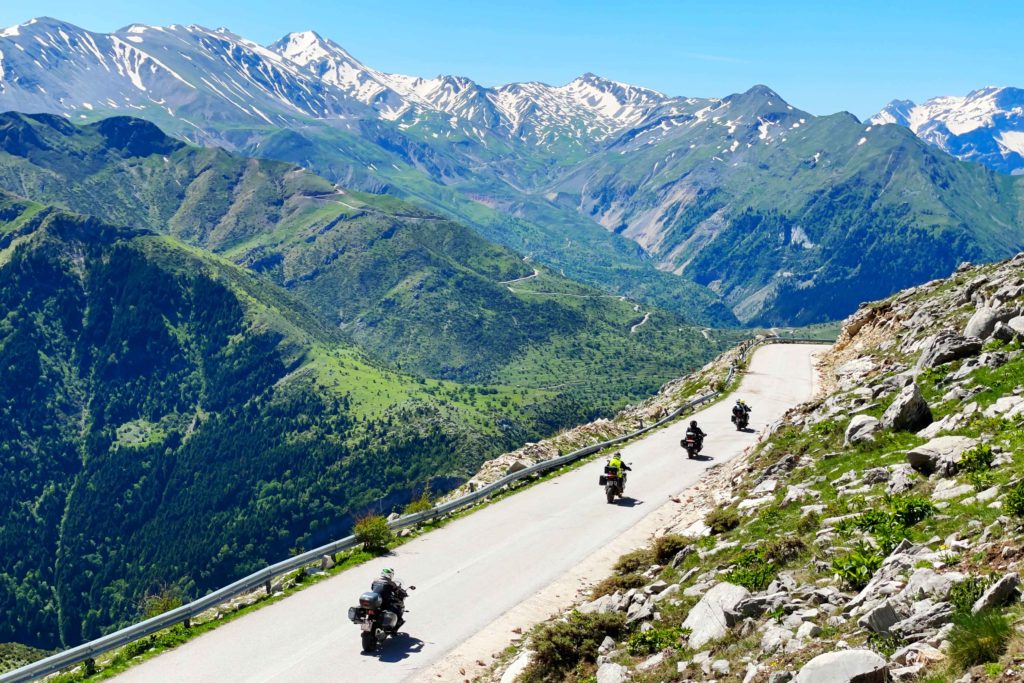
Located at the southern tip of the Balkans, Greece has a peninsular mainland bordered to the north by Albania, North Macedonia, Bulgaria, and Turkey, and is surrounded on three sides by the Aegean, Myrtoan, and Ionian seas. The Peloponnese region is a large peninsula that resembles a fat, four-fingered hand, separated from the mainland by a narrow canal through the Isthmus of Corinth. Scattered around these land masses are thousands of islands. Our 1,500-mile tour followed a counterclockwise route around part of the mainland and much of the Peloponnese.
Not only is Greece a great place to ride, its significance in terms of human culture runs deep. Located at the crossroads of Europe, Asia, and Africa, it has been inhabited since at least 270,000 B.C. Pick your historical era – Stone Age, Bronze Age, Dark Ages, Middle Ages – and Greece was the place to be. It’s the birthplace of democracy, Western philosophy and literature, theater, the Olympic Games, and a lot of the math and science we learned in high school. Heavy hitters like Aristotle, Plato, Socrates, Hippocrates, Homer, and Euclid were all Greek.
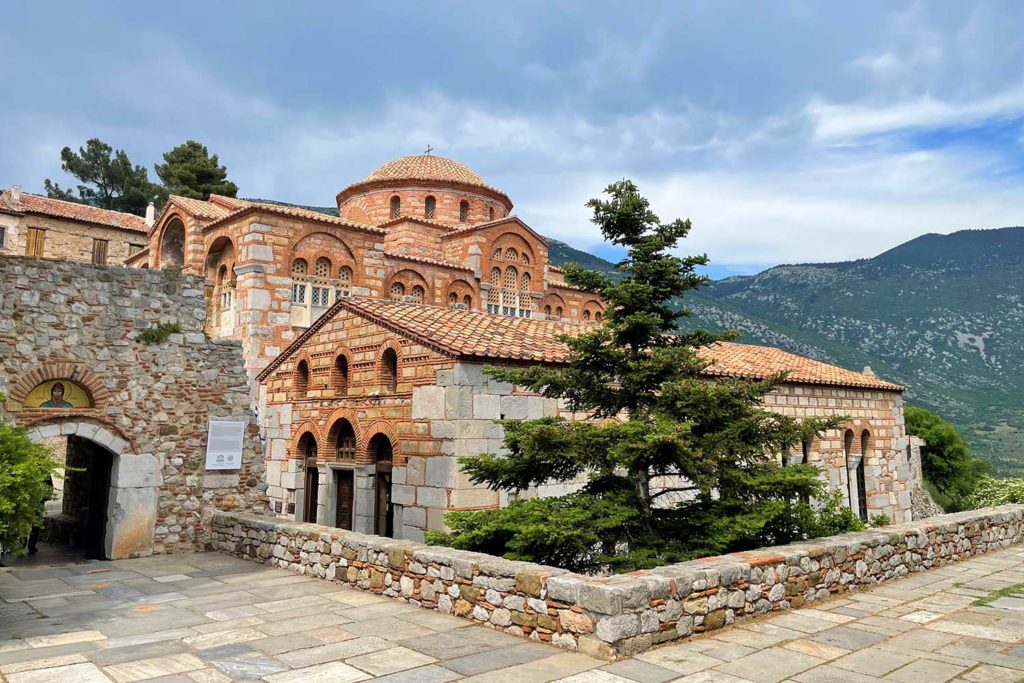
Greece is lousy with brown signs pointing down empty roads toward historic sites. Temples, monasteries, necropolises, theaters, you name it – there are more than can be visited in a lifetime. This tour visits major or unique sites, including five UNESCO World Heritage Sites. We visited two – the 10th century Monastery of Hosios Loukas and Delphi – on our first day. Established in the 8th century B.C., Delphi was where one would go to receive an oracle from the priestess of Apollo. It was also considered the center of the world, being the place where two eagles released by Zeus, one to the east and one to the west, came back together.
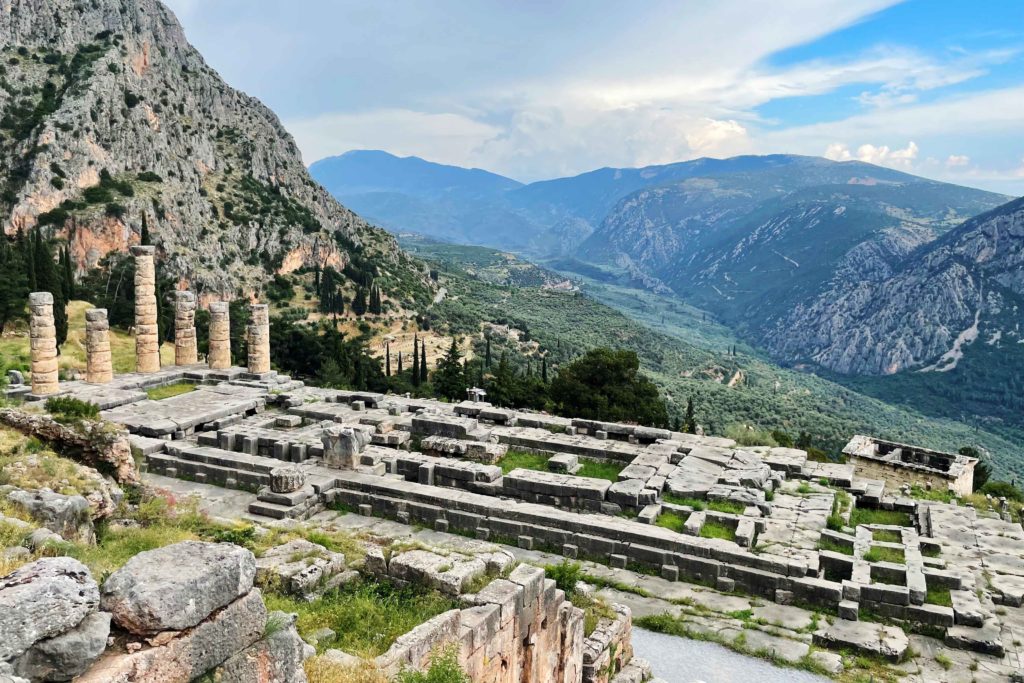
Bagging two UNESCO sites and getting our fill of switchbacks up and down steep coastal mountains, expansive views of the Gulf of Corinth, narrow roads winding through endless olive groves, and a high pass through a vibrant evergreen forest made for a full first day. The day’s heat was cooled by an afternoon thunderstorm and a post-ride “boot” beer – enjoyed while still wearing our riding boots.
For Your Eyes Only
By Day 2, we were finding our groove. Up early for breakfast, bring luggage down at 8:15, ride briefing at 8:30, and kickstands up at 9. From our mountainside hotel in Arachova, we summited a pass, cruised through a lush alpine valley full of ski chalets, wound our way up through evergreens to a ski slope, and then plunged down an endless series of hairpins to a hot, dry valley.
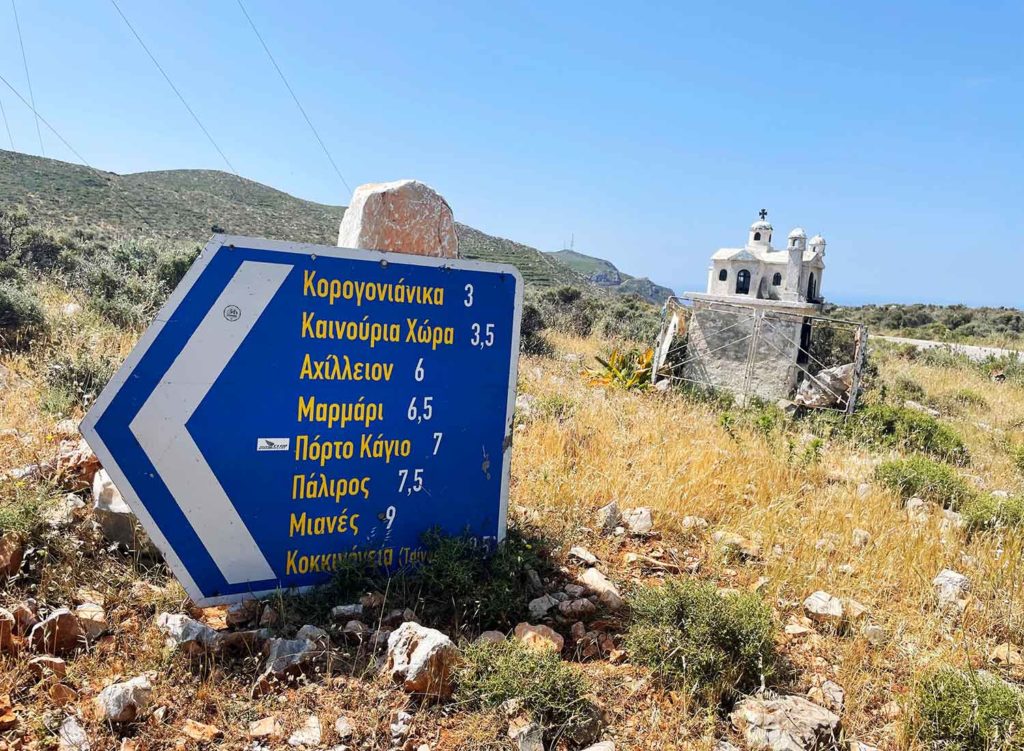
Early on, this tour taught us to expect the unexpected and be ready for anything. Like listening to enormous storks clacking their beaks in a nest above us while we ate lunch at a small outdoor cafe. Or passing by countless kandylakia, which are small roadside shrines erected to honor lost loved ones or saints for good fortune. We visited a monastery built into the side of a cliff, another built inside a tree, and others perched atop towers of stone.
On Day 3, after a picnic lunch overlooking a broad agricultural plain, we visited Meteora, a sprawling rock formation where dozens of monasteries were built atop sandstone pillars in the 14th century. Access to the monasteries was intentionally difficult, not only as protection from invaders but to test the faith of pilgrims, who had to ascend hundreds of feet by climbing ladders or being hoisted up in nets. Only six of the monasteries remain, hardy structures that have survived attacks by the Turks, bombing raids during WWII, a magnitude-7 earthquake in 1954, and the filming of a James Bond movie in 1981.
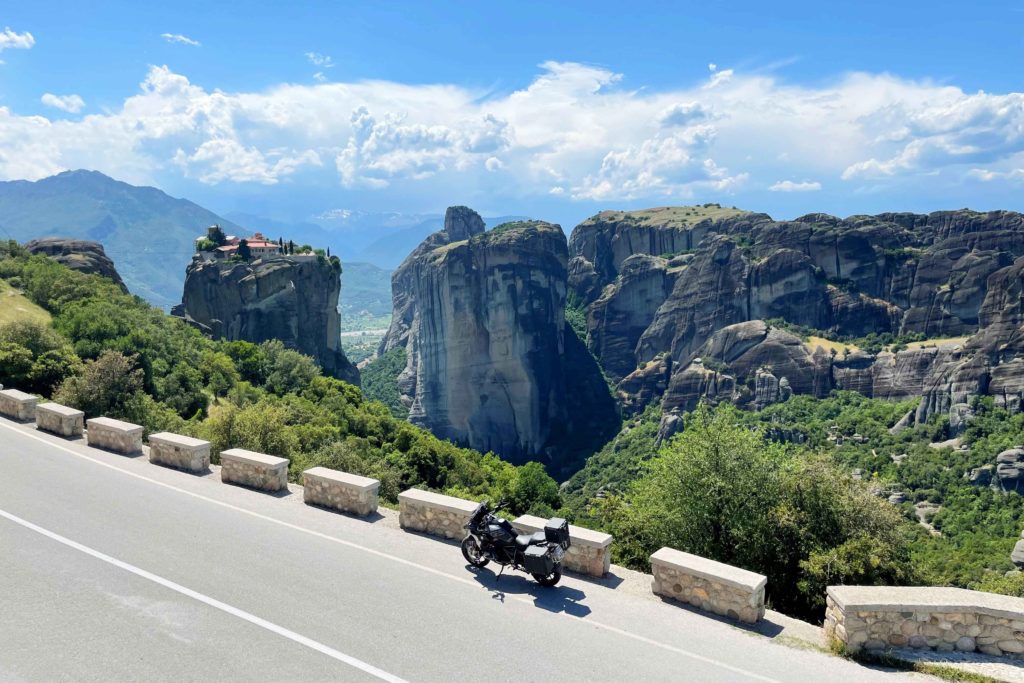
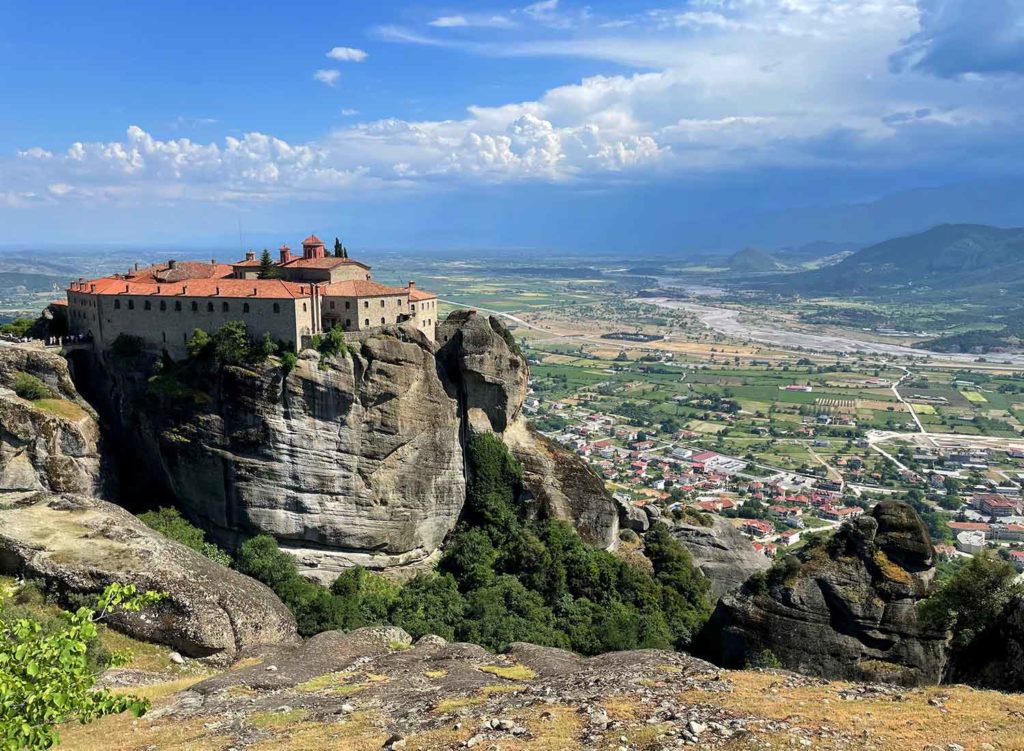
Day after day, we were surprised by the ruggedness of the scenery and tested by the trickiness of the roads. Edelweiss stitched together a challenging, convoluted route, so much so that it occasionally gave the tour guides’ GPS units fits. The width, pitch, and condition of the roads changed constantly, from smooth, wide highways to steep, narrow paths riddled with potholes, cracks, and dips. Although the route was almost entirely paved, we were kept on our toes by sand, gravel, mud, cow manure, fallen rocks, rain, fog, and even patches of snow.
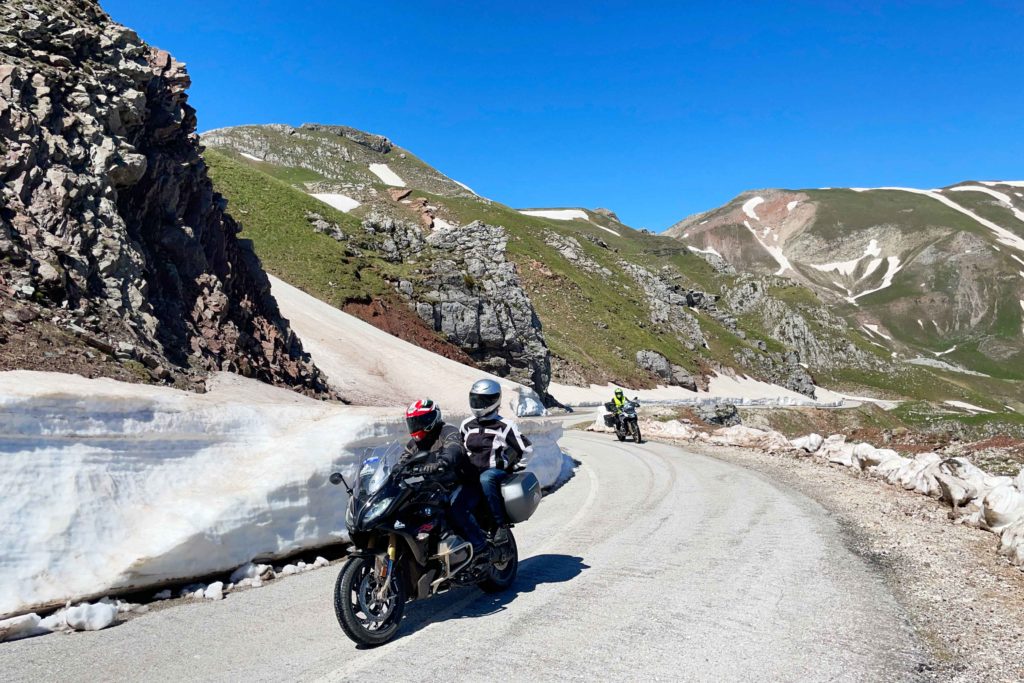
Above all, we had to be on the lookout for animals. Traveling off the beaten path, we shared the road with cows, horses, goats (often in large, road-blocking herds), sheep (ditto), dogs (often lying on the road), cats, snakes, and turtles. What we rarely dealt with, however, were other vehicles. Outside of the few cities we visited, there were hardly any cars, trucks, or buses on the road. It was like having Greece to ourselves.
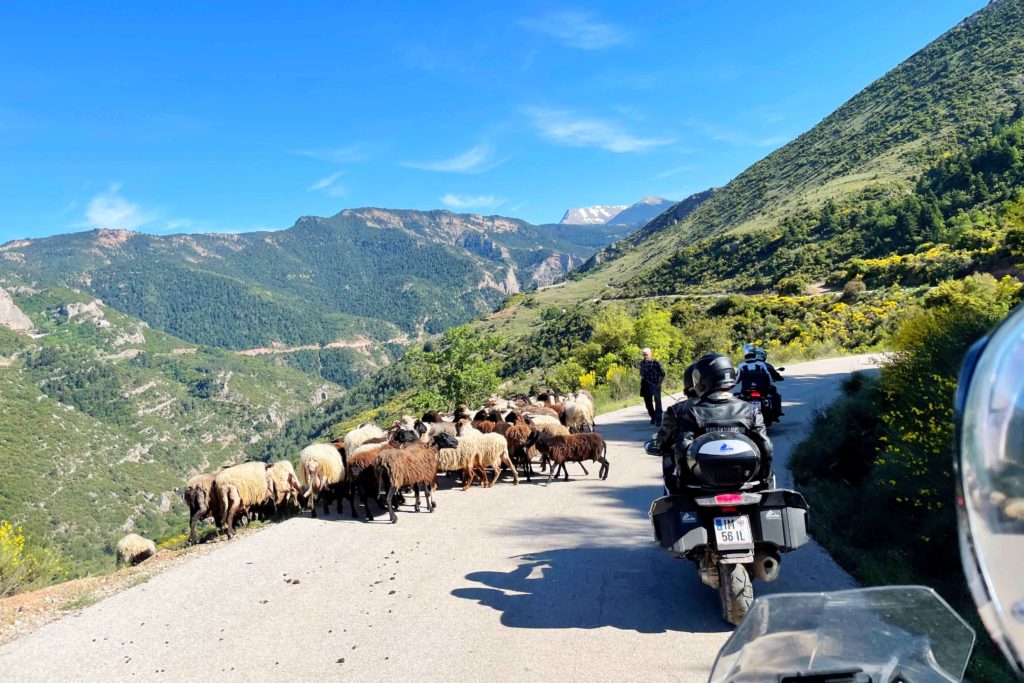
From the Mountains to the Sea
Our first few days were spent riding through mountains that seemed like they could have been in the Alps. On the fourth day, we rested. Some took advantage of the downtime to explore the mountain town of Metsovo, while others rode north into the Pindus Mountains near the Albanian border to visit Vikos Gorge, a cleft in the earth up to 4,400 feet deep and the world’s deepest gorge relative to its width.
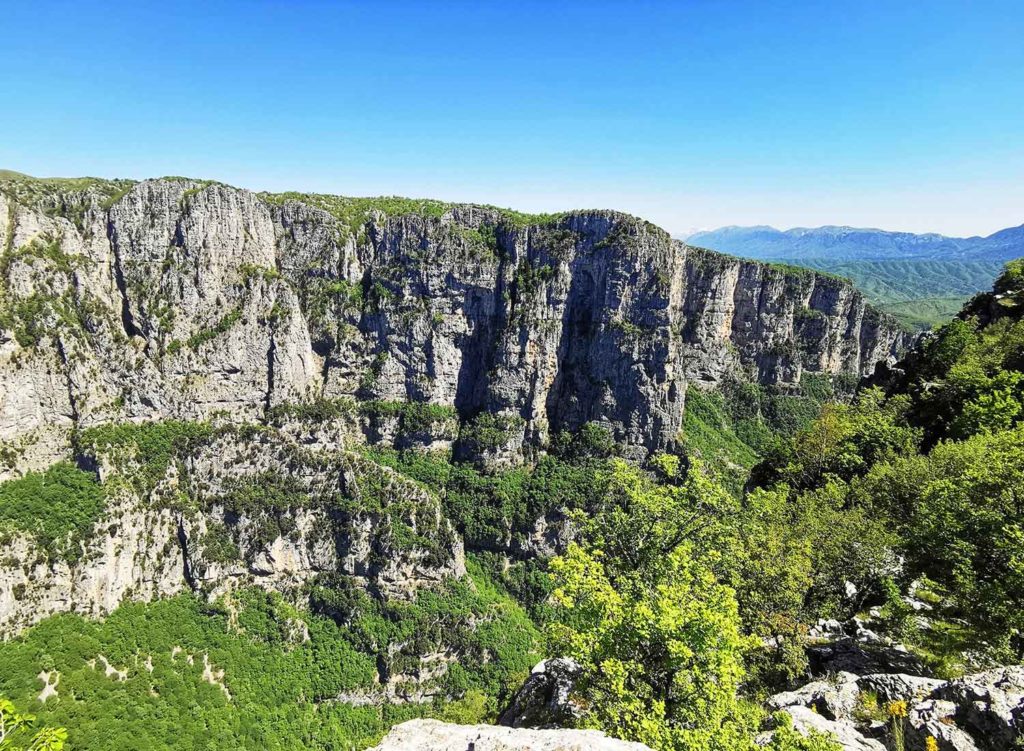
From Metsovo we turned south, climbing up and over mountain pass after mountain pass, including one that was mostly covered by a snowbank and had opened just days before. After a full day of challenging roads, we crossed a small floating bridge to the island of Lefkada. As happened at the end of most riding days, we enjoyed a celebratory boot beer and then gathered for a group dinner. We sat outdoors at the Crystal Waters resort, savoring the salty breeze and local fare as we recapped the day’s adventures, topping it all with glasses of ouzo.
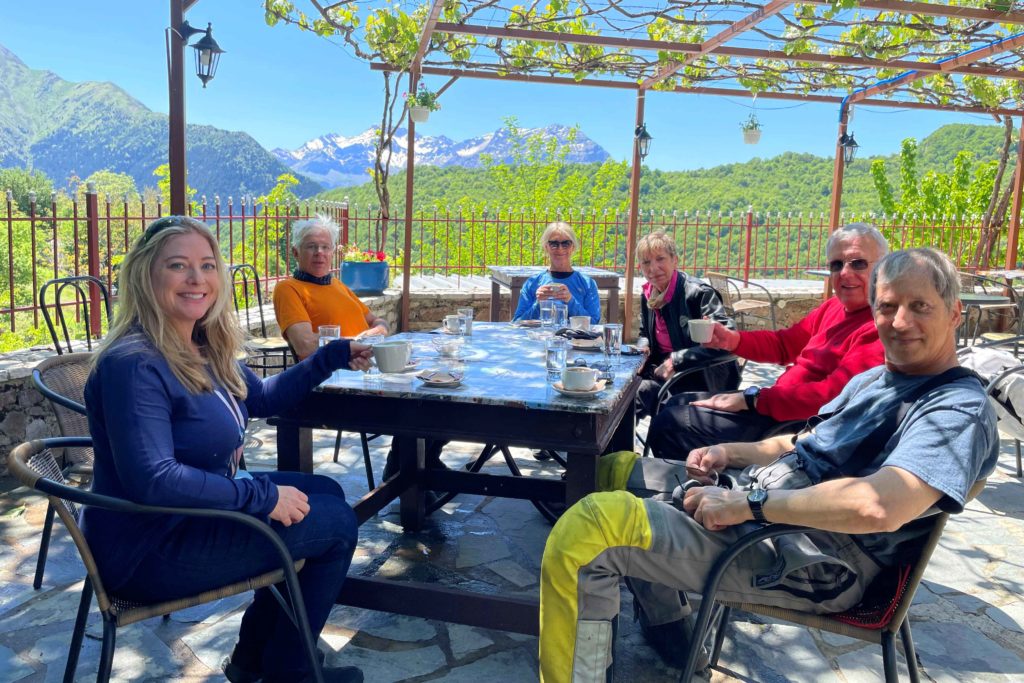
On Day 6, we rode along the southern coast of the mainland, the sea’s color ranging from topaz in the shallows to dark cobalt in the depths. We stopped for a morning coffee at a cafe on the edge of a small harbor, where a fishing boat pulled up and sold its catch directly to locals.
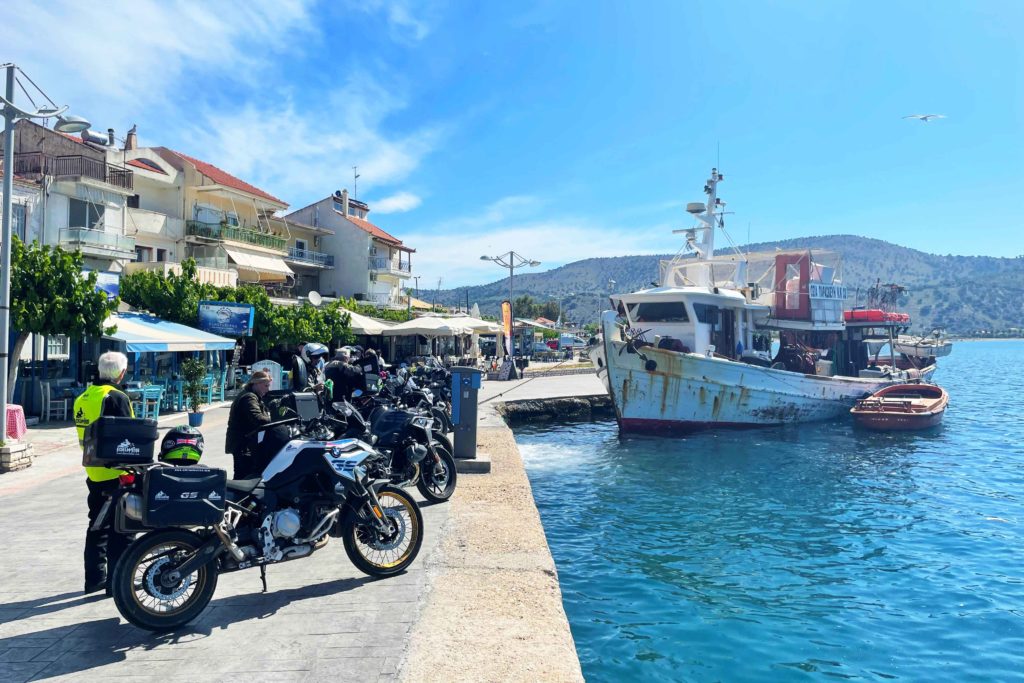
We left the mainland by way of the Rion-Antiron Bridge, crossing a narrow section of the Gulf of Corinth to the Peloponnese peninsula. We wasted no time climbing back up into the mountains on roads full of twist and shout. Late in the afternoon on the way to Vytina, we hit rush-hour traffic – herd after herd of goats and sheep being led down the road by shepherds and dogs.
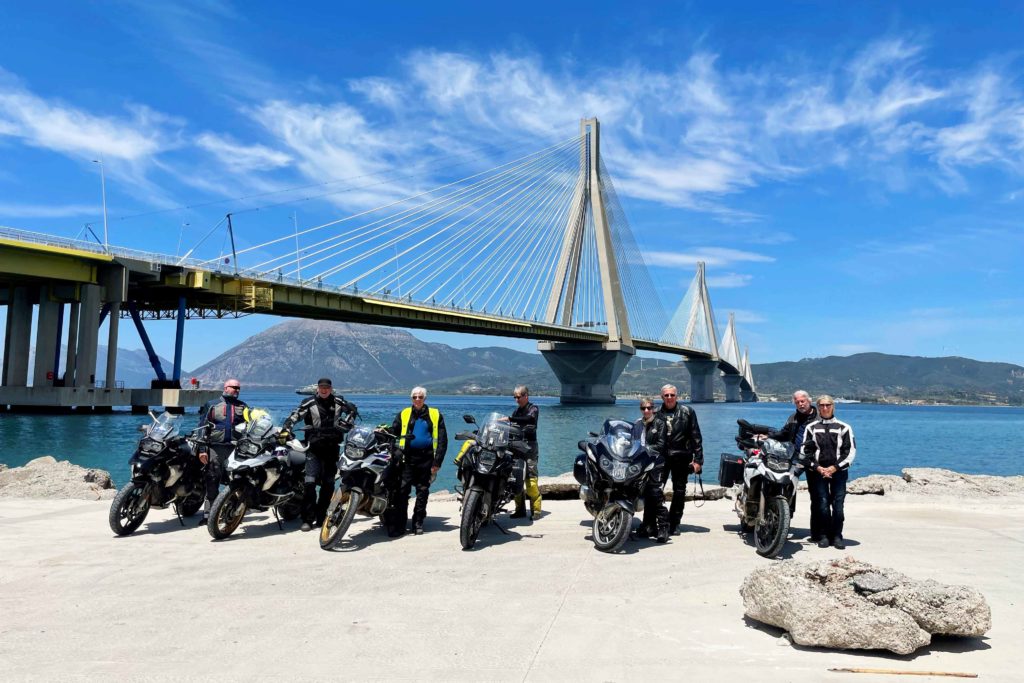
On the second rest day, our entire group rode to the ruins of Olympia, the ancient center of worship of Zeus and the site of the Olympic Games from 776 B.C. to 394 A.D. The temples and sports structures were mostly destroyed in 426 A.D. by an angry emperor and further damaged over the years by earthquakes and floods. Since the Olympic Games resumed in 1894, the Olympic flame has been lit at what remains of the Temple of Hera and transported by a torch to the host cities.
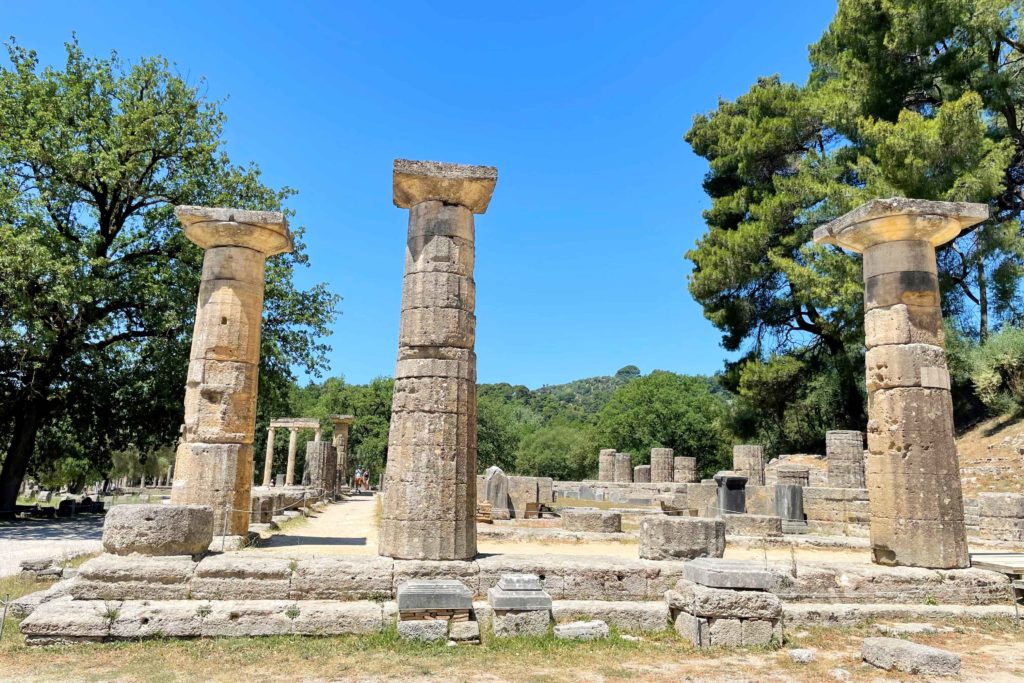
Prepare for Glory, and Olives
On Day 8, we sliced south through the heart of the Peloponnese, from Vytina in the mountains to Megalopolis in the valley. We made time on the motorway to reach Sparta, which, despite its legendary reputation as the home of courageous, self-disciplined warriors, is now just an ordinary city that’s well past its prime. A statue of mighty King Leonidas, who had the brass to take on the entire Persian army with 300 brave soldiers, overlooks an abandoned building.
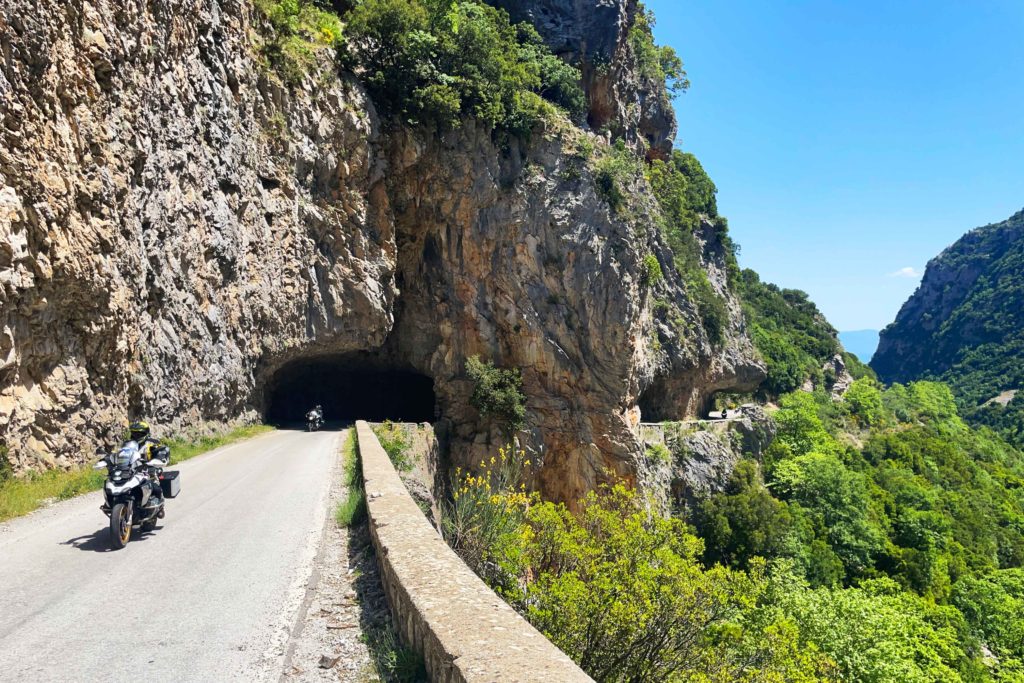
Rising out of Sparta is a winding road that burrows its way into the Taygetos Mountains via the Langada Gorge. After ascending a few switchbacks, the road cuts into the side of the gorge through a series of tunnels and overhangs on its way up to a 5,000-foot pass. We wound our way down to the coastal city of Kalamata, known for its namesake black olives, and had lunch on the beach. It was a hot afternoon of riding along the coast, and after a boot beer in Areopoli, several of us cooled off with a swim in the Ionian Sea.
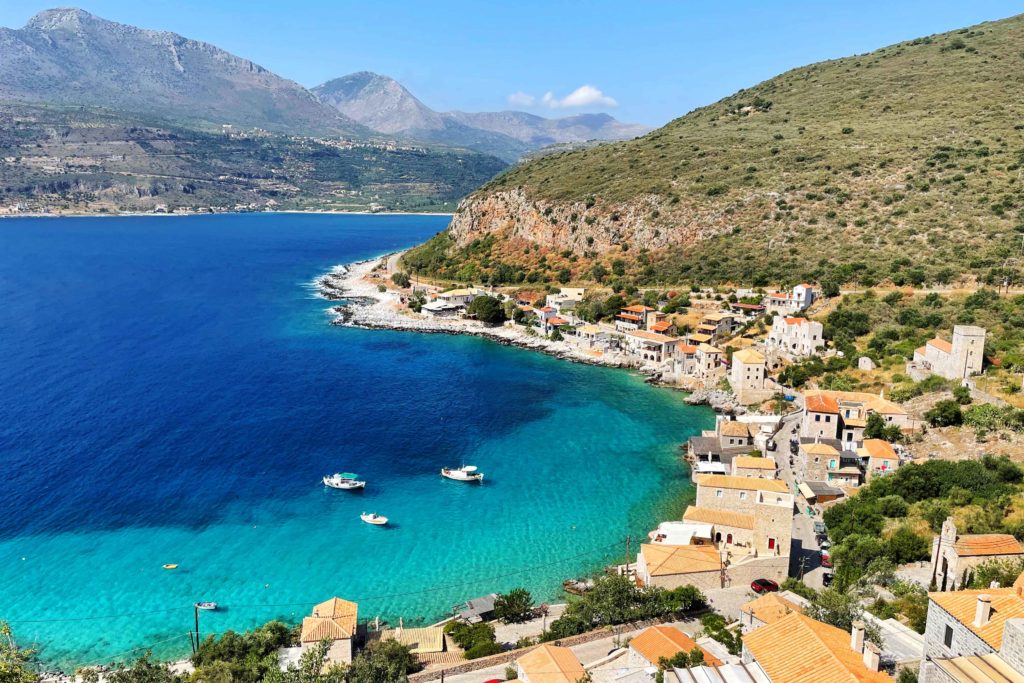
Our final rest day was in Monemvasia. We stayed in a beautiful resort hotel with two infinity pools, a gourmet restaurant, and views of vineyards and the sea – the perfect reward after logging so many challenging miles. It was also where Carrie and I celebrated our eighth wedding anniversary. Paul and William had a special treat sent to our room, and the next morning we found our GS decorated with tissue paper, empty beer cans strung together with duct tape, and a “just married” sign.
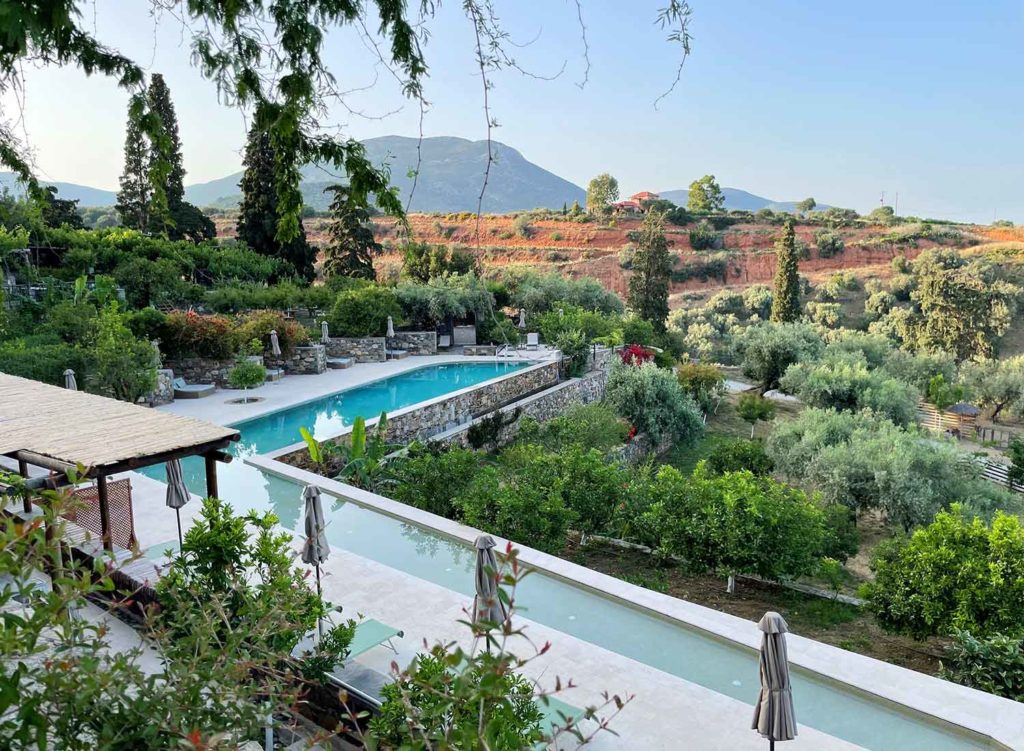
Over our final two days, we made our way back to Athens, riding north along the Peloponnese coast, where we enjoyed coffee and lunch stops overlooking the sea and visited the theater at Epidaurus, built in the 4th century B.C. and renowned for its exceptional acoustics.
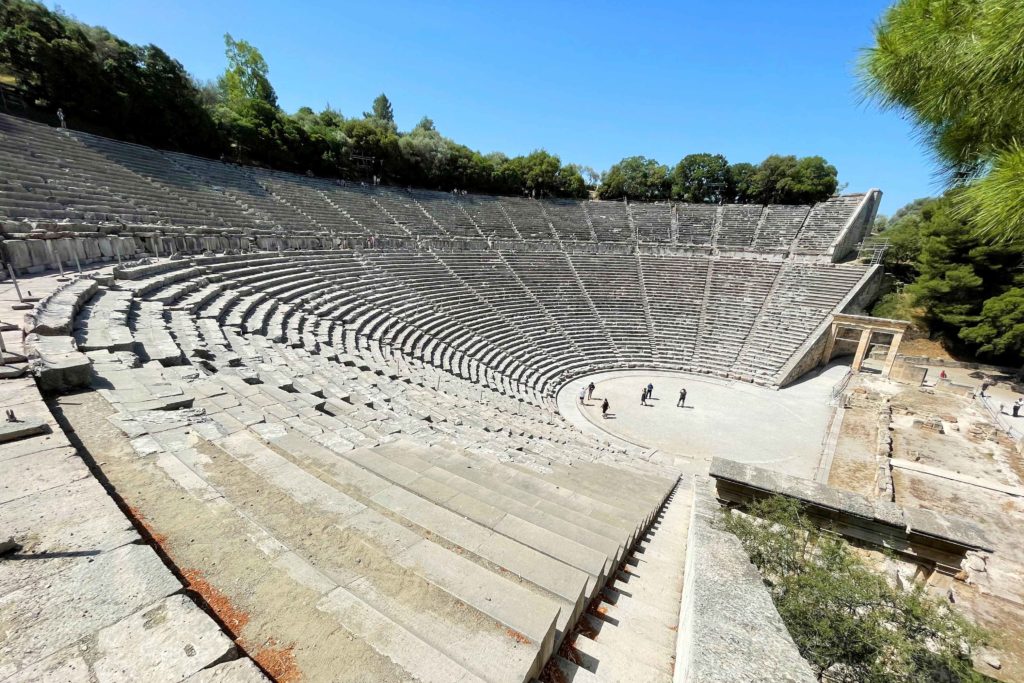
Our Bucket Overfloweth
Greece seems to be on everyone’s bucket list. If they’ve never been, they want to go; if they’ve visited before, they want to go back. It’s a magical, mysterious, romantic place that looms large in our imaginations and is rich in history, culture, cuisine, scenery, and so much more.

It is difficult to fathom the depth of history in Greece’s mountains and along its shorelines. Living in a nation barely two and a half centuries old on a continent “discovered” five centuries ago, seeing the remnants of kingdoms and empires that stretch back several millennia boggles the mind, like trying to comprehend the far reaches of outer space. Is this real? Did actual humans carve this stone and erect these temples, till this soil and fish these waters, worship gods and contemplate ideas of self-determination?
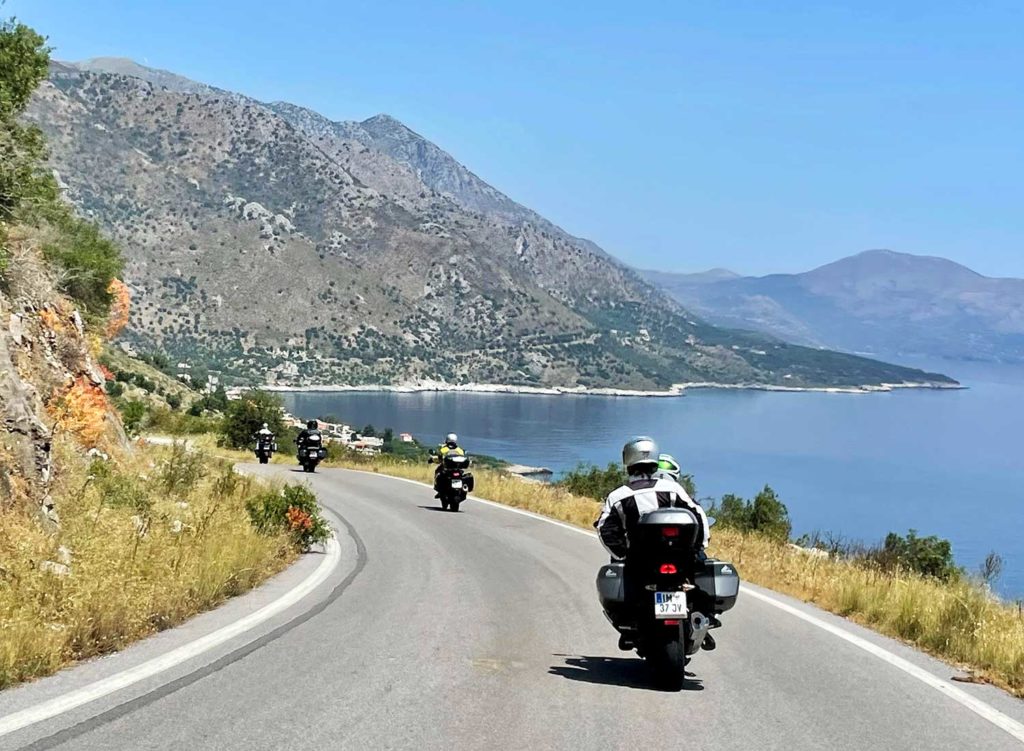
Spending two weeks in Greece engaged our senses, dispelled our preconceived notions, and tested our mettle. This tour is not a walk in the park. It is challenging and at times quite intense, with long riding days on technical roads with variable weather and conditions. Every night we collapsed into bed, dead tired but deeply satisfied.
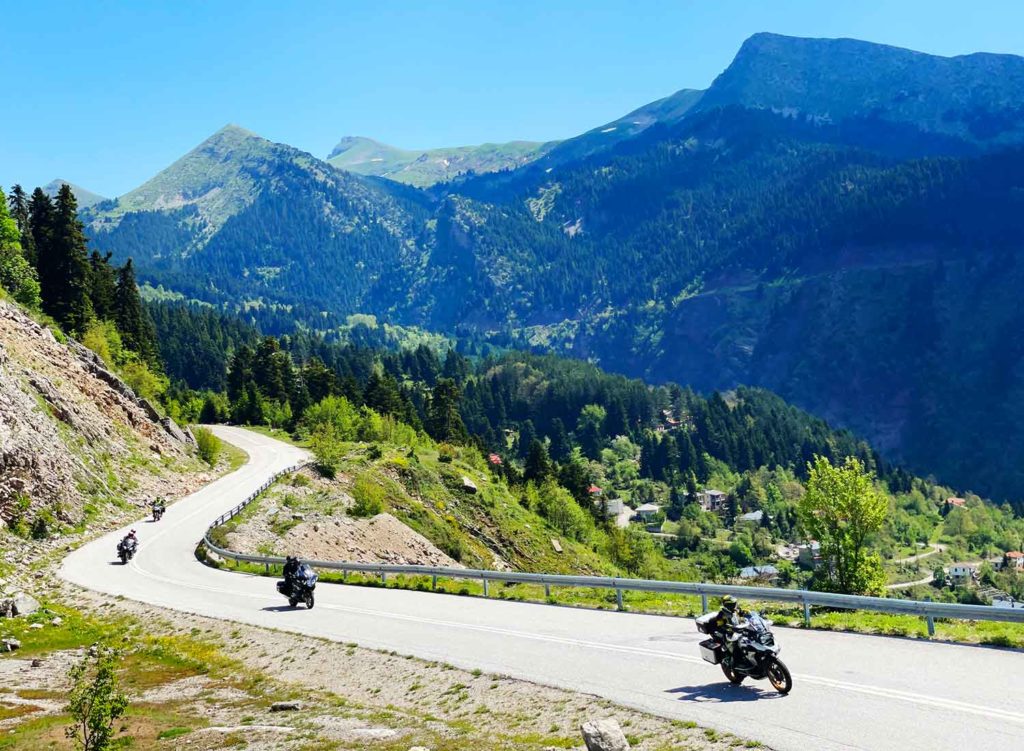
Edelweiss Bike Travel’s next Best of Greece tour is scheduled for October 8-21, 2022. The tour will run twice in 2023: May 1-15 and September 29-October 12. For pricing, details, and information about Edelweiss’ full schedule of tours, visit EdelweissBike.com.
The post Edelweiss Bike Travel Best of Greece Tour Review first appeared on Rider Magazine.
Source: RiderMagazine.com

